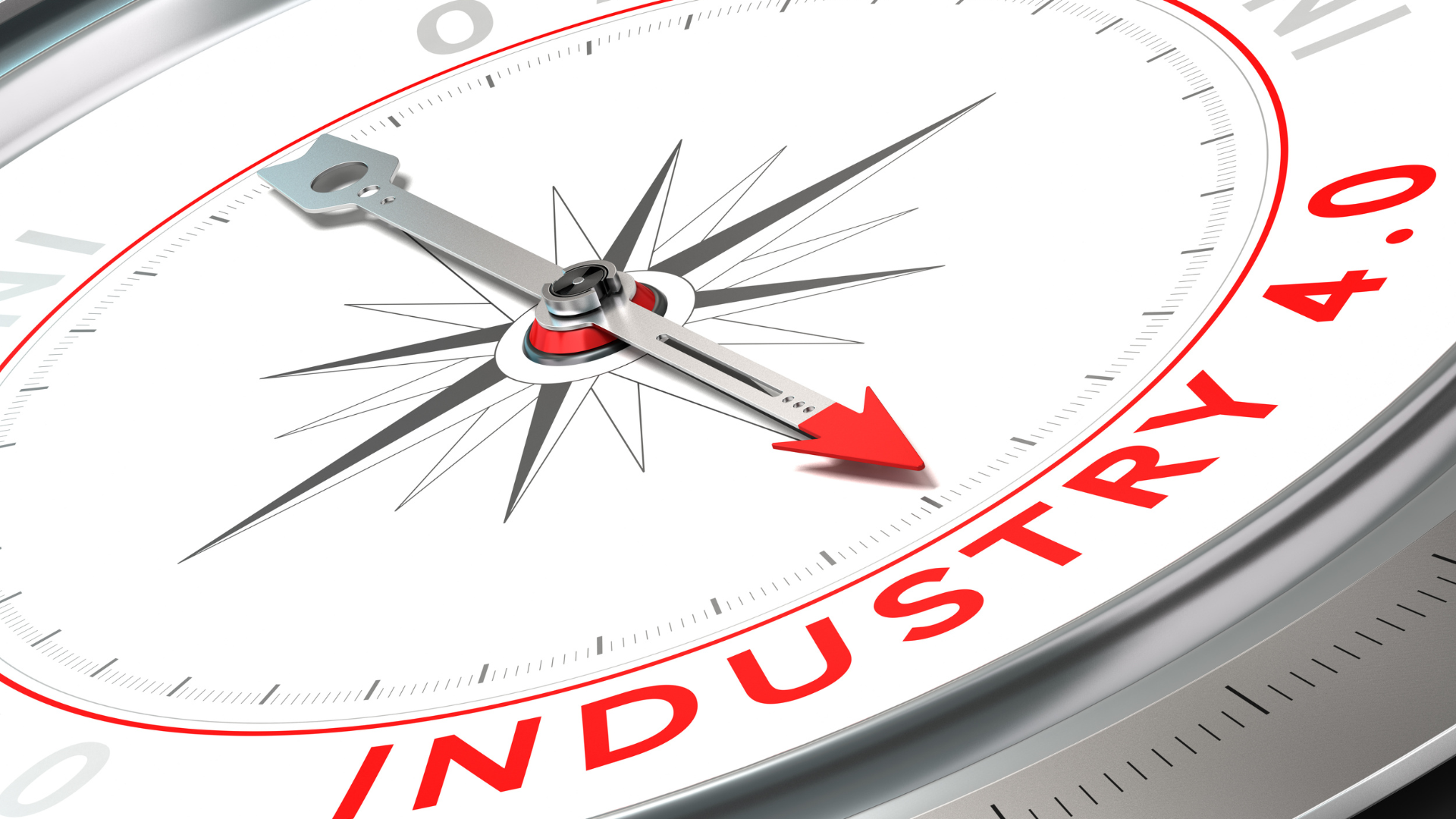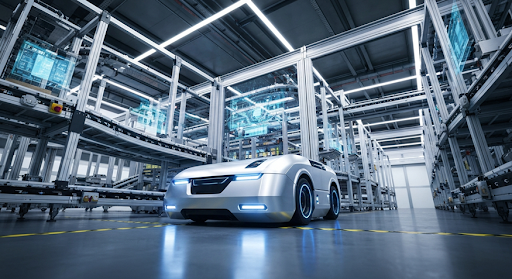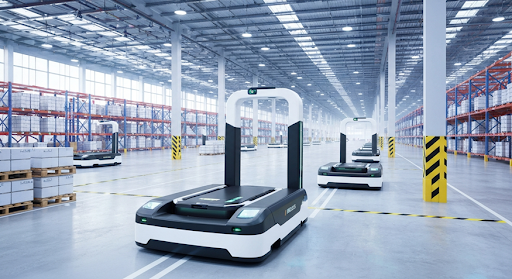What is the Industry 4.0 Strategy?
What is the Industry 4.0 Strategy?
Industry 4. 0, often referred to as the Fourth Industrial Revolution, signifies a significant shift in the manufacturing and industrial sectors by embracing advanced technologies and their integration into various processes. This transformative era is characterized by the adoption of cutting-edge technologies such as artificial intelligence, Internet of Things (IoT), big data analytics, robotics, and automation. These technological advancements enable enhanced connectivity, real-time data analysis, improved efficiency, and increased productivity in manufacturing and industrial operations. Industry 4. 0 empowers organizations to optimize their production processes, minimize errors, reduce costs, and unlock new opportunities for growth and innovation in today's fast-paced digital landscape. It represents a shift towards automation, data exchange, and smart systems in order to improve efficiency and productivity.
Advantages and Disadvantages of Fourth Industrial Revolution
The advent of Industry 4. 0 has ushered in a multitude of advantages that businesses can leverage to stay competitive in today's fast-paced market. One primary benefit is the notable increase in productivity that comes from harnessing advanced technologies and automation. By integrating smart systems and robotics into their operations, companies can streamline processes, optimize workflows, and achieve higher output levels. Moreover, the implementation of Industry 4. 0 practices often leads to reduced costs through automation. By replacing manual labor with intelligent machines, businesses can minimize human error, improve efficiency, and lower production expenses. This not only results in cost savings but also enables companies to allocate resources more effectively across various aspects of their operations. Another significant advantage is the improved quality control made possible by Industry 4. 0 technologies. With real-time monitoring sensors embedded within production lines, businesses can continuously track and analyze data to ensure consistent product quality throughout the manufacturing process. This proactive approach allows for timely adjustments and preventive measures to be taken, reducing defects and enhancing customer satisfaction. Industry 4. 0 also brings enhanced flexibility to production processes. The integration of cyber-physical systems allows for dynamic adaptation to changing market demands or unforeseen circumstances. Manufacturers can swiftly reconfigure their production lines or modify product specifications as needed without significant disruptions or costly downtime. Furthermore, one cannot overlook the power of data analysis facilitated by Industry 4. 0 advancements in decision-making processes. With the ability to collect and analyze large amounts of data from various sources, such as sensors on machinery or customer feedback systems, businesses gain valuable insights for strategic planning and informed decision-making. This empowers them to identify trends, optimize supply chains, anticipate customer needs better, and make data-driven choices that drive growth. In summary, embracing Industry 4. 0 offers numerous advantages for businesses across industries: increased productivity through automation; reduced costs by minimizing human intervention; improved quality control through real-time monitoring; enhanced flexibility in adapting to market changes; and the ability to analyze vast amounts of data for more informed decision-making. Embracing these advancements can undoubtedly pave the way for a more successful and competitive future in today's rapidly evolving business landscape.
While Industry 4. 0 brings numerous benefits and advancements, it's important to acknowledge the potential disadvantages that come along with it. One of the primary concerns is the possibility of job losses due to increased automation. As companies adopt more advanced technologies, certain tasks that were once performed by humans may be replaced by machines or AI systems. This shift in workforce dynamics raises valid concerns about unemployment rates and the need for retraining programs to equip workers with skills required in a digitally-driven economy. Another aspect to consider is the potential security risks associated with interconnected systems and devices. With Industry 4. 0 heavily relying on interconnected networks, there is an increased vulnerability to cyber threats and breaches. The integration of various technologies creates potential entry points for hackers or malicious actors, making information security a crucial factor that needs constant attention and investment. Furthermore, embracing Industry 4. 0 requires significant investments in technology infrastructure and training programs for employees. Upgrading existing systems or implementing new ones can be costly both in terms of financial resources and time required for implementation.
Additionally, organizations need to invest in training programs to ensure their workforce possesses the necessary skills and knowledge to effectively utilize these advanced technologies. By addressing these concerns head-on, businesses can proactively mitigate risks associated with Industry 4. 0 while reaping its benefits towards greater productivity, efficiency, and innovation within their operations.

What Does Industry 4.0 Mean?
To gain a more profound and comprehensive understanding of the concept of Industry 4. 0 and its wide-ranging implications across various sectors, an excellent resource to explore would be PDF documents that delve into this topic in great detail. These resources offer a wealth of comprehensive information, presenting in-depth analyses, case studies, and expert insights that can help you grasp the intricacies of Industry 4. 0 and its potential impact on businesses, economies, and society as a whole. By referring to these well-curated PDF resources, you can equip yourself with the knowledge needed to navigate the rapidly evolving landscape of the fourth industrial revolution. These PDFs often cover various aspects such as what Industry 4.0 means, examples of products or industries that have embraced this revolution, key technologies involved in Industry 4.0 (such as Internet of Things (IoT), artificial intelligence (AI), robotics), and more.
What Is An Example of an IR 4.0 Product?
One illustrative example of an Industrial Revolution 4. 0 (IR 4. 0) product is a smart factory, where cutting-edge technologies such as the Internet of Things (IoT) come together to create a highly interconnected and automated production environment. In this type of factory, machines are equipped with IoT sensors that enable them to gather and share data in real-time. This seamless communication among machines allows for autonomous decision-making, as they can analyze the data and optimize production processes without human intervention. As a result, productivity is enhanced, efficiency is maximized, and potential errors or bottlenecks are identified and addressed promptly. This transformative integration of IoT technology in factories demonstrates how IR 4. 0 is revolutionizing traditional manufacturing practices and paving the way for more advanced and streamlined industrial processes.
Industry 4. 0, also known as the Fourth Industrial Revolution, signifies a monumental shift in the manufacturing and industrial sectors. This transformative movement harnesses cutting-edge technologies to propel efficiency and innovation across a wide array of industries. By seamlessly integrating advanced technologies such as artificial intelligence, machine learning, cloud computing, and the Internet of Things (IoT), Industry 4. 0 aims to revolutionize traditional manufacturing processes by creating smart factories that are highly interconnected and automated. This enables manufacturers to optimize production processes, minimize downtime, enhance product quality, and streamline supply chain operations. Furthermore, Industry 4. 0 holds the potential to unlock new business models and opportunities through data-driven insights and predictive analytics. In essence, this paradigm shift in industry is reshaping how companies operate by leveraging the power of technology to drive tangible results that benefit both businesses and consumers alike.



